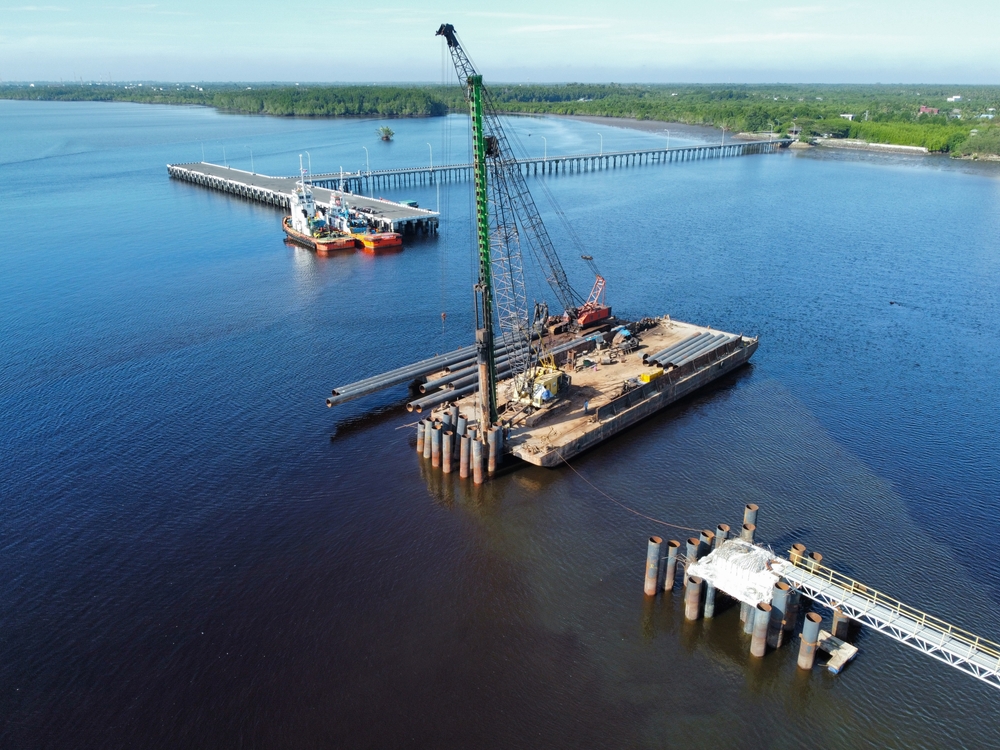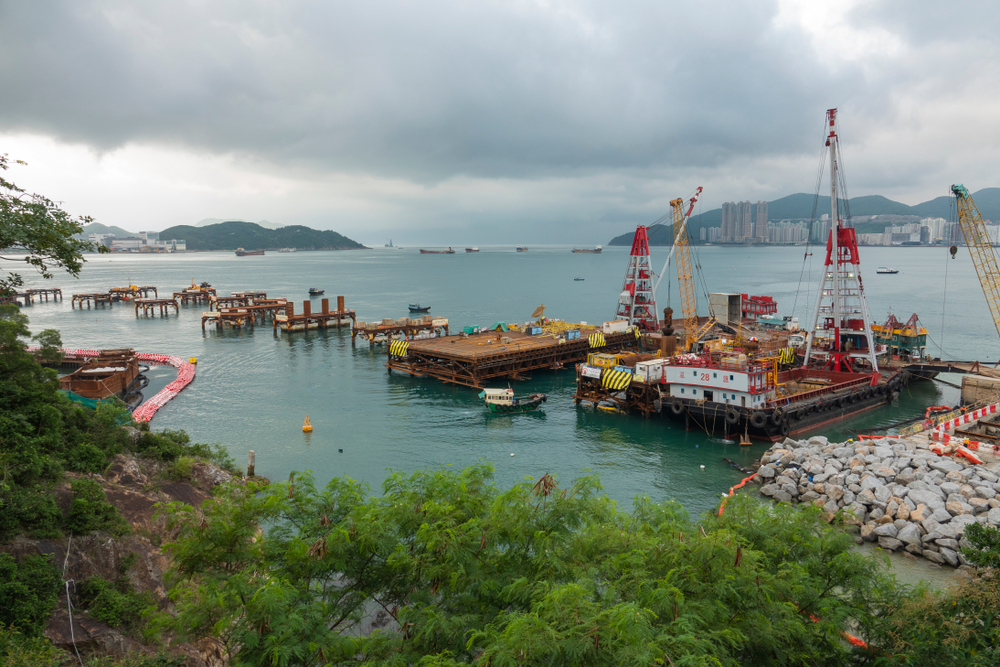Table of Contents
Modern harbor design is far more than placing piers and breakwaters. It requires a deep understanding of coastal engineering, tidal flows, sediment transport, and port infrastructure demands. With global trade increasing and climate change altering sea dynamics, harbor planners face both opportunity and risk.
This guide breaks down the essentials of modern harbor design, equipping professionals with the knowledge needed to develop safe, efficient, and sustainable ports.
Understanding Site Conditions
Every harbor project begins with a thorough understanding of the site conditions. This involves mapping the bathymetry, or the underwater topography, to determine how deep the seabed lies and where potential dredging may be needed. Alongside bathymetry, geotechnical investigations assess soil strength, stratification, and bearing capacity, which are critical for the design of quay walls, breakwaters, and other marine structures.
Environmental data plays an equally important role. Engineers must evaluate tidal ranges, wave climates, wind patterns, and sediment transport dynamics. These factors influence everything from dock orientation to breakwater length and positioning. In high-energy coastal zones, wave action can be intense, requiring more robust protections to reduce agitation within harbor basins and maintain calm waters for vessel operations.
Harbor Layout Planning
Once the natural conditions are assessed, harbor layout planning begins. The layout determines the shape and orientation of the harbor basin, positioning of the entrance channel, and placement of piers and docking zones. The primary objective is to provide safe, efficient maneuvering areas for ships while maximizing land use.
Orientation is typically aligned with prevailing wave and wind directions to reduce turbulence and siltation inside the harbor. A misaligned entrance channel could lead to excessive wave intrusion, jeopardizing vessel safety and dock operations. The basin should be shaped to dissipate wave energy and facilitate the movement of vessels without undue currents or turbulence.
The entrance channel must accommodate the size and draft of the vessels expected to call at the port. With global trade increasingly reliant on large container ships, the channel must be designed with adequate width, turning radius, and depth. Engineers also model tidal flows and current behavior to ensure navigability during both high and low tide conditions. Additionally, the use of approach lighting and navigation aids ensures vessel safety during nighttime or poor visibility conditions.
Zoning within the harbor is another important step. Separation of cargo handling, passenger terminals, fishing docks, maintenance yards, and storage areas helps streamline operations and reduce risk. An efficiently zoned harbor allows for simultaneous activities without interference, improving throughput and safety.
Breakwater Design and Placement
Breakwaters are indispensable to harbor design, serving as barriers that shield the harbor from wave action and stabilize sediment movement. Their effectiveness hinges on precise alignment and construction relative to the harbor entrance and local wave directions. Incorrect placement can create eddies, sediment accumulation, or even erosion at unintended locations.

Efficient harbor planning requires precise alignment with environmental data—like wave patterns, geotechnical conditions, and vessel traffic. A strategic layout minimizes maintenance and maximizes throughput for both cargo and passenger terminals.
Breakwater design is informed by a combination of hydrodynamic modeling and structural engineering. Rubblemound breakwaters are the most common due to their adaptability and energy-absorbing properties. Caisson breakwaters are suitable in deeper waters and offer a smooth face, often used in container terminals. Floating breakwaters, while less common, can be employed in calmer waters or where seabed conditions prevent traditional construction.
Properly designed breakwaters guide waves away from the entrance and dissipate energy before it reaches the harbor basin. This not only protects infrastructure but also ensures safer berthing and cargo handling. Engineers must also consider how breakwaters will affect longshore sediment transport to prevent unintended shoaling or erosion downstream.
Port Infrastructure Integration
A successful harbor design does not end with the water. Integration of port infrastructure on land is critical to support maritime operations. This includes berths, quay walls, storage yards, roads, rail connections, and utility networks. Berthing facilities must accommodate ship size, cargo types, and handling methods. The structural design of quay walls is based on anticipated loads, tidal variations, and soil conditions.
Dredging is a recurring requirement in almost all harbor projects. The initial dredging phase establishes the required depth for vessel access, while maintenance dredging ensures that sediment buildup does not impede operations. Harbor designs should facilitate easy access for dredging equipment without causing operational downtime.
Utility integration is another aspect that often determines port competitiveness. Electricity, water supply, fuel lines, fiber optics, and stormwater systems should be embedded into the design from the start. Additionally, modern ports are intermodal, requiring seamless road and rail connectivity to inland logistics hubs. A well-connected port ensures that goods move efficiently from ship to store.
Sustainable and Resilient Design
With increasing pressure from climate change, harbors must be resilient against sea level rise, stronger storm surges, and shifting sediment patterns. Adaptive design strategies include elevating key infrastructure, incorporating floodwalls, and designing flexible layouts that can accommodate expansion or retrofitting. Some harbors now use living shorelines—natural buffer zones using vegetation and reefs—to absorb wave energy and protect against erosion.
Environmental stewardship is also a growing priority. Compliance with environmental impact assessments (EIAs) is mandatory in most jurisdictions. These assessments examine how the harbor project might affect marine habitats, water quality, and coastal ecosystems. Designs should include mitigation strategies such as silt curtains, sediment traps, and runoff treatment systems to reduce harm during construction and operation.
Harbors that prioritize sustainability often see long-term benefits in terms of community support, regulatory approvals, and operational resilience. Green initiatives, such as the use of renewable energy, low-emission cargo handling equipment, and water reuse systems, are becoming standard in next-generation ports.
Modern harbor design requires a multi-disciplinary approach that blends technical knowledge, environmental awareness, and long-term resilience. From understanding site conditions and tidal flows to designing breakwaters and integrating port infrastructure, every decision plays a crucial role in the performance and sustainability of the harbor.
For planners, engineers, and developers, success lies in embracing data-driven planning, coastal engineering principles, and collaboration with stakeholders. By building harbors that are not only functional but also adaptable and environmentally responsible, the industry can meet the demands of global trade while safeguarding our coasts for future generations.




